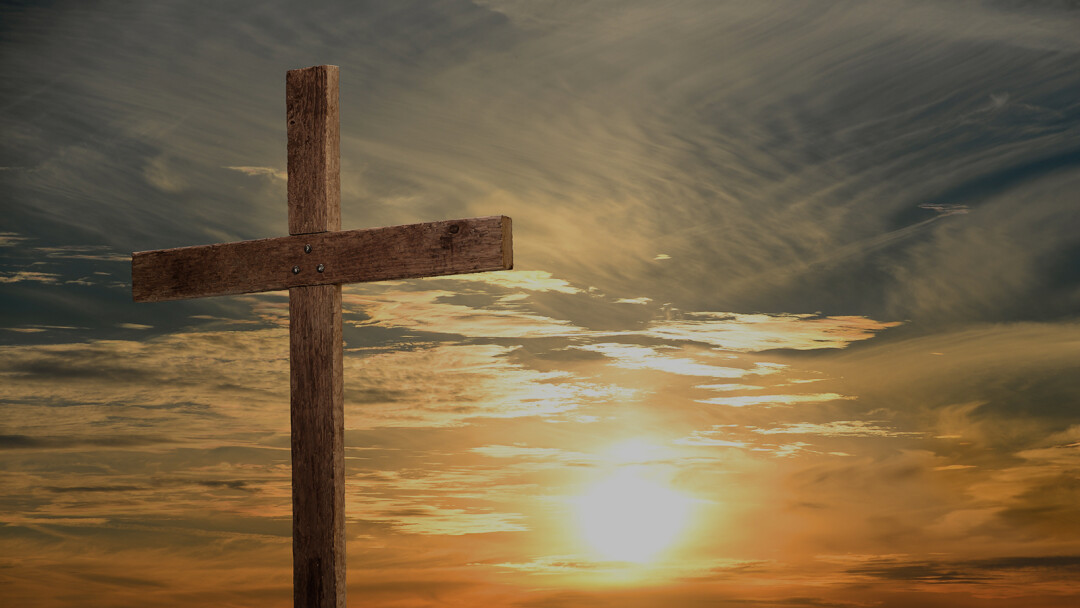Bethany and Betrayal

“Bethany and Betrayal”
The Rev. Dr. Fred G. Garry
Matthew 26.1-6
When Jesus had finished saying all these things, he said to his disciples, “You know that after two days the Passover is coming, and the Son of Man will be handed over to be crucified.” Then the chief priests and the elders of the people gathered in the palace of the high priest, who was called Caiaphas, and they conspired to arrest Jesus by stealth and kill him. But they said, “Not during the festival, or there may be a riot among the people.”
Now while Jesus was at Bethany in the house of Simon the leper, a woman came to him with an alabaster jar of very costly ointment, and she poured it on his head as he sat at the table. But when the disciples saw it, they were angry and said, “Why this waste? For this ointment could have been sold for a large sum, and the money given to the poor.”But Jesus, aware of this, said to them, “Why do you trouble the woman? She has performed a good service for me. For you always have the poor with you, but you will not always have me. By pouring this ointment on my body she has prepared me for burial. Truly I tell you, wherever this good news is proclaimed in the whole world, what she has done will be told in remembrance of her.”
Then one of the twelve, who was called Judas Iscariot, went to the chief priests and said, “What will you give me if I betray him to you?” They paid him thirty pieces of silver. And from that moment he began to look for an opportunity to betray him.
I made a vow, a resolution, to master eggplant parmesan. Gathered with friends on a New Year’s Eve, there were calls for amendment of life, for better habits, both diet and exercise, but when it came to my turn to declare my intent for the coming year, I chose eggplant.
It took me nearly 3 years to achieve a level of mastery. Many iterations, many versions, many different ways of slicing eggplant: thick and thin, disk or lengthwise. And then there were the questions, To bread or not to bread? Should the sauce be part of the baking or kept aside?
Ultimately, I found joy this way. You sweat the thick sliced disks of eggplant with kosher salt; then you roast; once roasted you fry them in butter and oil until they have a firm exterior. Stack them two or three high with fresh mozzarella in between and on top and just a thin layer of sauce beneath. Don't crowd the stacks. Bake this for thirty minutes. Only then cover with a reduced marinara and some parmesan cheese. Bon apitito.
Somewhere in the three years I realized what I was doing. Eggplant parmesan was a lovely childhood memory; it was the first time I had tasted something so exotic, and I wanted to reclaim that memory. Cooking, for me, is partly meditation and partly the pursuit of memories. I want to remember the taste of the first time I ate a properly cooked filet mignon. I want to feel the crumble of a croissant as it is baked in Paris. I want to be poor in college again with a machaca burrito from Alberto’s, while at the same time not being either young or poor and in my own kitchen.
Memory is different from understanding. Understanding is something we pursue, chase, seek, and find. Memory is something that comes to us, finds us, makes its own way by invitation or by intrusion. Hence, what I came to see with the eggplant is that I was inviting the memory of the taste more than I was trying to find a recipe, chase a dish. Once I stopped pursuing, the taste came on its own. The memory that is.
You can hear this when older people say they cannot conjure a name or a word. It feels just out of reach. Older people will say, "It will come to me in a minute or so." This is sometimes also true of lost items. Simply by no longer looking, the memory of where we placed our keys, our glasses, our reason for being in a room, comes to us. Memory comes to us; we come to understanding.
The older you become the more this is clear. Often people describe this revelation as "losing their memory" or having a bad memory. But the opposite is true. As a young person our memories and our understanding are untangled and quite limited. What we remember and what we understand as a young person can happen quickly. As we age, we are so filled with memories and often no longer willing to trust easy understanding, that both take time, much more time.
Marcel Proust wrote a seven-part novel called In Search of Lost Time. It is an astonishing work of art, some contest, the greatest novel. In each of the seven-parts what binds them all together is the question of desire, what does it mean to desire life, desire someone, to be desired. Yet, even more than the question of desire is the nature of memory. Proust was the one who discovered the way memory comes to us. His novel, though, rarely states this explicitly. What the novel does in its more than 3000 pages is create a place for you to remember; it is like a room, a house, a garden where you can wait for memory to arrive.
These rooms, houses, gardens are not simply a memory aid or a matter of function like all the terrible waiting rooms you find in doctor's offices. The waiting rooms of Proust are not there to distract or amuse like magazines and televisions or fish tanks, although I must admit a great love of a good fish tank in a doctor's office. These are meant to occupy the patients and mollify the offence of the tardy physician. In Search of Lost Time is filled with places to wait for memory, but the power of the novel is how we wait with beauty. Beauty is the way our waiting prepares us for memory to arrive.
Before I proceed, just a matter of confession. Memory and beauty are very un-Protestant. Our tradition is best understood as a rejection of both. Memory in the church is tradition and Protestants were a protest of tradition as defining the church. We said the Bible, not tradition and papal bulls, should tell us what it means to worship God and follow Jesus. And, all the pageantry, the stained glass, the statues and frescoes and mosaics and soaring spires and bell towers, the beauty of the church, we cast them aside for the utility of preaching the word and seeing the world through clear glass. Our only saving grace of beauty was music.
There is a long-time joke, adage, about churches and choosing carpets. Nothing divides a church like having to choose the color of carpets for a sanctuary. While not always the case of carpets, color is something where Protestants fall apart. Take just a moment to look around you. How many colors do you see? And shades of white do not count. A parishioner once told me she almost left the church over the color chosen to repaint the sanctuary.
We, Protestants that is, we smashed stained glass windows in cathedrals. And when Protestants began to build their own churches, we trusted utility, function, far more than form. Beauty is not our strong suit. And, neither is memory.
In the 1980s there was an attempt to remedy this in the form of a liturgical calendar. As it had been more than 400 years since this was a controversy, no one seemed to notice that Presbyterian churches all of sudden had special Sundays. Days of memory. Perhaps it was because we didn't call them feast days or encourage people to remember and pray to Saint Anthony, but about fifty years ago we reintroduced the role of memory in worship. This can work, but often it just goes unnoticed which is the whole point of memory.
When we look to the story of the anointing at Bethany, this event should be difficult for us to grasp. Why would Jesus make such a declaration about preaching and memory and beauty. He seems to be saying this is really important. And the extravagance, the waste, the betrayal of the poor. If we are honest, we should see ourselves more as the the angry disciples than the woman who anointed Jesus.
Jesus calls us to remember her wherever the gospel is preached. Only the designation of Peter as the rock upon which the church is built rivals this claim. The beauty of her act, how she prepared him for burial, how she, unlike all the others seemed to grasp, what was happening to him. She did a beautiful thing, and she must be remembered. Perhaps this is to say, the good news is a beautiful memory.
Sometimes memories are unpleasant. Not all memories are of the eggplant parmesan quality. This is the other side of our reading. The gospel writer frames the anointing with betrayal. He interrupts the desire of the Pharisees to find a betrayer and Judas stepping forward as such, he places the beautiful story in between the bitterness and fear and anger.
There are memories we invite and rejoice with their arrival— the golden evenings with friends and conversation where we laughed until we cried. And then there are memories we wish to consign to oblivion, to be cast upon the "foggy ruin", forgotten; we want them to stay away but they do not; they intrude. Bob Dylan said, someday maybe, I'll remember to forget.
You don't need me to tell you there are bad memories, hard things that seem to hit from behind. Such is not very good news. And some could say that the way Matthew has constructed his gospel seems to taint the beauty of the anointing, wrapping it in bitterness robs its splendor. It's like someone ruining a great moment, bringing the joy all the way down. Judas is someone we would all like to forget. The memory of betrayal is not something we invite.
There is a theory about trauma and a model for treating it called resilience. The theory is that we can heal ourselves, we have the strength in us to overcome the painful memories that rob peace and keep sleep and sanity at bay; we can because we possess good memories. The resilience model of therapy is that you start with a place of beauty, a moment of splendor, someone or sometime where you are whole, a child, a soul unencumbered, safe. Once this is remembered you hold onto for a moment. You invite the memory to linger with you. Like Proust and his rooms of beauty, you create such a place within.
Then, and only then, you invite the hard memory, the hurt, the trauma. You take the risk to let the pain come to you. But only for a short time, for a moment. You don't dwell. And then you go back to the beautiful memory. You go back and forth. Back and forth. The good memory heals the bad.
Resilience therapy is a powerful tool. Maybe part of the power is what Matthew creates in his gospel. The image of anointing, the alabaster jar, the extravagance, the beauty of her intent: this is the good memory. The pharisees and Judas with their anger and bitterness and betrayal: they are bad memory. Resilience, like Matthew, calls for both. Not for balance, not as a kind of image of good and evil. Good memory is not balanced by the bad; beauty redeems betrayal; peace overcomes trauma. This is the good news.
On the West side of the Tiber in Rome there is a church called Saint Cecilia of Travastere. At the heart of the altar of the church is a statue. A marble carving of the young martyr. Cecilia is lying in repose after being put to death. It is the focus, the center of the sanctuary, a pure image of pain. And then, moving in all directions is a riot of color, stone and metal, shape and pattern. It is as if the pain of her death is being wrapped in beauty. Her suffering is engulfed in the most extravagant of materials.
What I love most about the sanctuary is the way you can tell each generation of the church, century after century, has added to this canvas of color. You get a sense that the church kept adding and adding, and with each addition it is as if they are redeeming the bitter, overcoming the betrayal, healing the trauma with beauty. They are embodying what words cannot reach, what understanding cannot achieve. They are creating the rooms of Proust, the place of resilience, a kitchen where good eggplant is prepared.
Now I know we are highly unlikely to cover this chancel wall with mosaics or to replace the opaque glass with stained. I got it. But there was a day, there was a time that the church of Saint Cecelia of Travastere was unadorned, a blank canvas. I know I'll have to keep using my imagination where Protestants gather. I am not jumping ship. That is okay. The rooms of Proust are not always found in churches. And we do have our hymns and anthems, we have moments of beauty. What is really important is that we learn to trust that beauty redeems bitterness, splendor heals betrayal; this we must remember with her. Amen.

Rev. Dr. Fred G. Garry
Senior Pastor & Head of Staff
Sermon Notes
You can add your own personal sermon notes along the way. When you're finished, you'll be able to email or download your notes.
